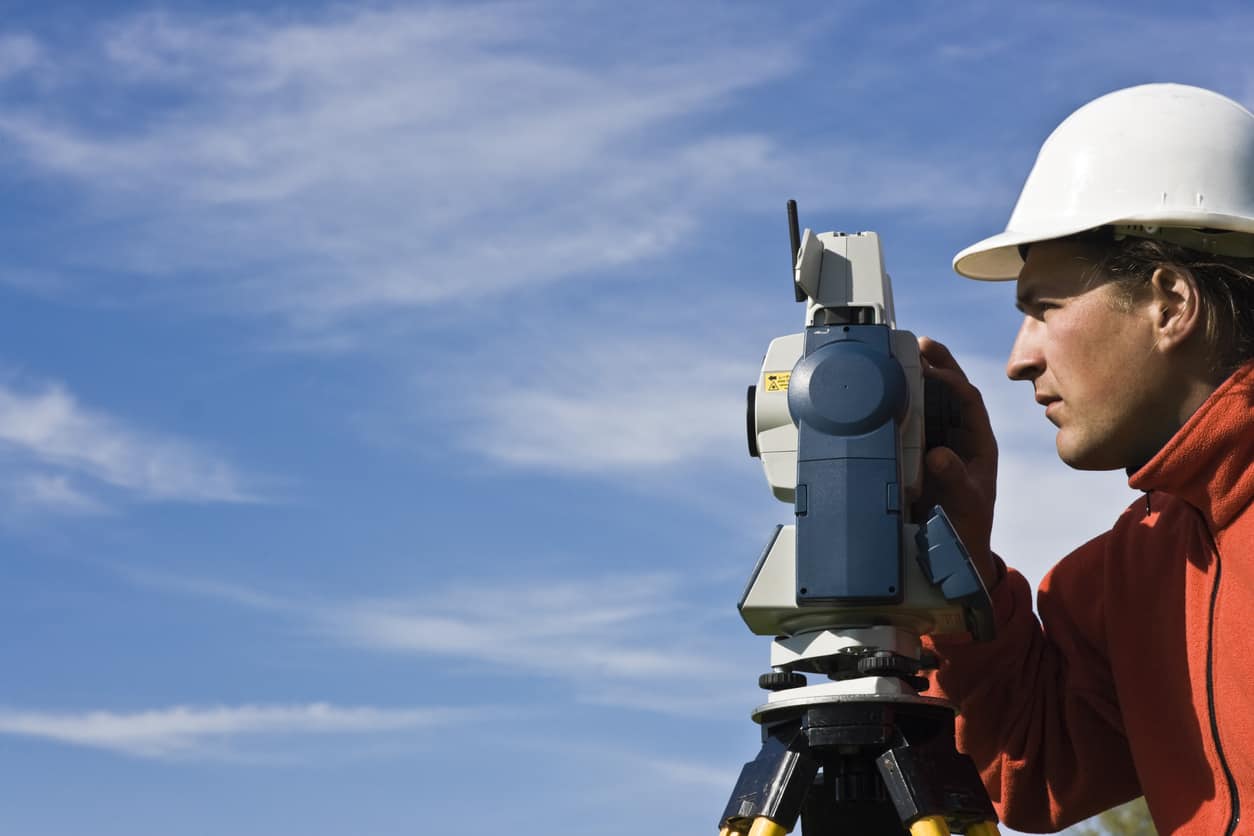
In basic terms, an RTK is a real-time kinematic (RTK) satellite navigation receiver that takes the signals from GNSS satellites and produces a precise position, often within 1 cm. By integrating several different GNSS systems, including satellites from GPS (USA), GLONASS (Russia), Beidou (China), and Galileo (Europe) modern GNSS receivers can produce a precise position even under tree canopy.
This high degree of precision is what makes RTK GPS one of the most popular land surveying tools in the world. RTK GPS is so universally useful, that industries from construction, to surveying, land developers, and autonomous vehicles take advantage of its precision. All of these industries rely on precise location data to ensure that their projects proceed smoothly.
Accuracy is everything for survey operations, and using an RTK system can dramatically improve the precision of measurements.
Real-time kinematic (RTK) positioning relies upon information broadcasted from satellites, and a ground based receiver. The two systems combine to provide information that allows for an incredible level of precision.
Through the use of complex algorithms, this type of navigational system can give you sub-centimeter level accuracy. As a general rule, you can expect to achieve an accuracy range of up to 1 cm + 2 ppm horizontally. The rate tends to double when you measure vertically.

Many other systems use a code-positioning technique that is usually less accurate than the carrier-based positioning system that RTK uses. With RTK, a fixed base station is used along with a rover to reduce the possibility of errors. The base station collects satellite data that it sends to the rover so that its location coordinates are more accurate.
Although there is not any system that comes within a perfect range of 100% accuracy, RTK GPS equipment helps you get close. You will need to know how to use the equipment effectively to reduce the margin of error and achieve the closest level of accuracy possible.
The accuracy of these systems is dependent upon the ability of the base station to communicate effectively with the rovers while receiving information from the satellite system. As the rovers communicate with the base station, they use complicated programming that includes ambiguity resolution and differential correction to reduce the incidence of errors that can occur during the determination of the position of the receiver.
The first step in using RTK GPS is the setting of a base position. In order to receive sub centimetre correctional data, the receiver needs to be to triangulate its position. This is done through the use of a base station, which averages thousands of readings in order to determine a position within a certain diameter circle. Through the use of satellite geometry, the base receiver is able to ascertain a position. The more positioned averaged, the more accurate this position. However, averaging thousands of positions is simply not practical when hundreds of measurements need to be made with a roving receiver. Therefore, once the position of the base has been established, either an internal radio, or internal cell modem is used to broadcast its position to the rover. This information can then be used to precisely determine the position of the rover in conjugation with relative satellite information between the two systems.
However, environmental factors can also affect the accuracy of these systems. Factors such as, tropospheric activity, canopy cover, and buildings can cause signal interference. For instance, when under tree canopy, the leaves of the tree cause the satellite signals to be deflected, causing errors to propagate in the position. To minimize the risk of environmental factors affecting the accuracy of the data, it is crucial to place the base station in an area with a clear view of the sky and in a place that is far from potential radio transmission interference.
Anytime you bring new equipment into your operations plan, you need to make sure that it is the highest quality and that the members of your crew know how to use it effectively. Like other types of land surveying equipment or systems, an RTK GPS system requires an understanding of how the set up affects data collection. This becomes even more important when you are using the equipment in rugged terrain or weather conditions that can affect the outcome of the data that is collected.
When you invest in this equipment, you should also know if you are receiving the assistance of a knowledgeable team of professionals who know how to help you set up and maintain your system so that you can always achieve optimum accuracy.
Bench Mark Equipment & Supplies is your team to trust with all your surveying equipment. We have been providing high-quality surveying equipment to land surveyors, engineers, construction, airborne and resources professionals since 2002, establishing ourselves as the go-to team in Calgary, Canada, and the USA. We provide a wide selection of equipment, including global navigation satellite systems, RTK GPS equipment, GNSS receivers, data collector systems, and more. We strive to provide the highest level of customer care and service for everyone. To speak to one of our team today, call us on 403-286-0333 or email us at [email protected].

Canada’s #1 supplier of land surveying equipment and instruments.